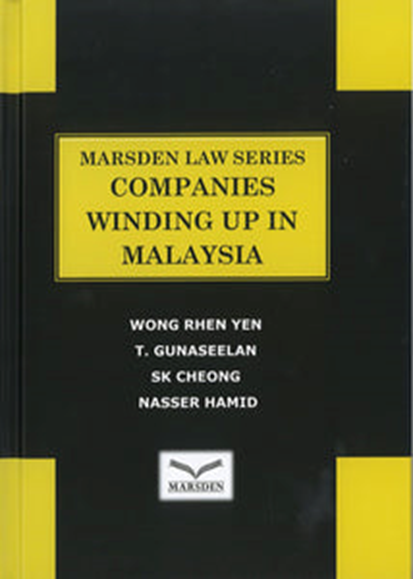We will be closed from 5pm Thursday 17th April for the Easter Bank Holidays, re-opening at 8.30am on Tuesday 22nd April. Any orders placed during this period will be processed when we re-open.

This publication provides the reader with the latest position on applications to wind up a company and the competing interests of the parties that may be affected by the said winding- up proceedings. This will encompass the position of the creditors, the Debtor Company, directors, shareholders, contributories and liquidators.
Sections 431 to Section 560 the Companies Act 2016 (Act 777) provide the ambit of the winding up provisions. All decisions on the Companies (Winding-up) Rules 1972 are also provided.
The role of the courts in the winding up process is well stated. The book examines the role of a winding up judge who remains’ the custodian of the interests of every class affected by the liquidation’.
In essence, this practical book examines the law and procedure and the authorities relating to the subject of winding up.
It provides the reader with the legislative changes brought about by the Companies Act 2016 (Act 777) while providing the reader with the application of general principles of winding up and the application of such principles within the context of decided authorities from all over the Commonwealth.
It is through decided cases that one interprets the intention of the legislature, and this publication provides all relevant cases. Extensive research has been embarked upon to present all the relevant principles garnered from decided cases from Malaysia, United Kingdom, Australia, New Zealand, Canada, India and Singapore. Extracts from key case law are provided where necessary.
An added feature of this publication is that it provides ease of reference in relation to the Comparative provisions of the Companies Act 1965 (Act 125) and the Companies Act 2016 (Act 777). The comparative sections appear next to each other and are added tools to further comprehend the changes brought about by the new legislation.